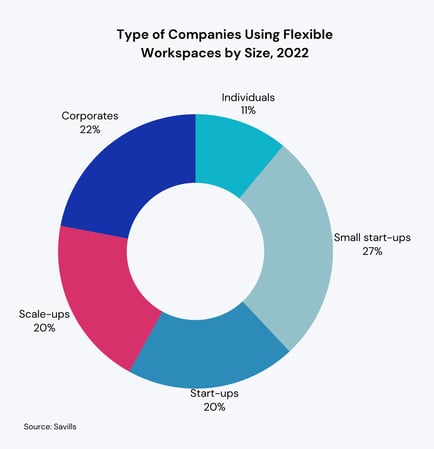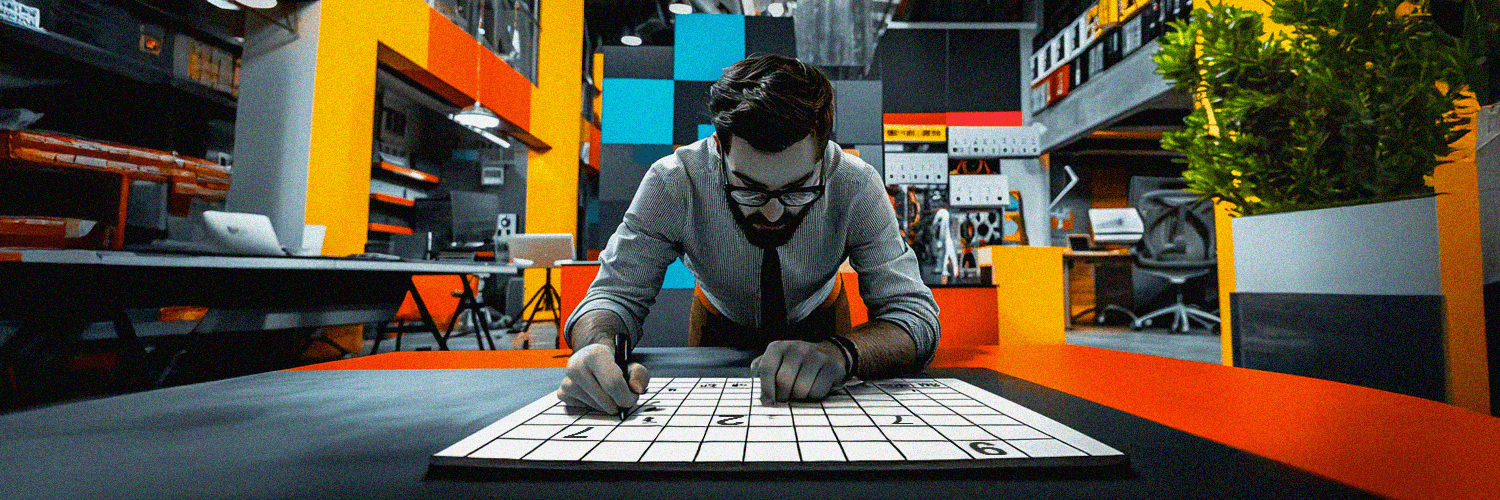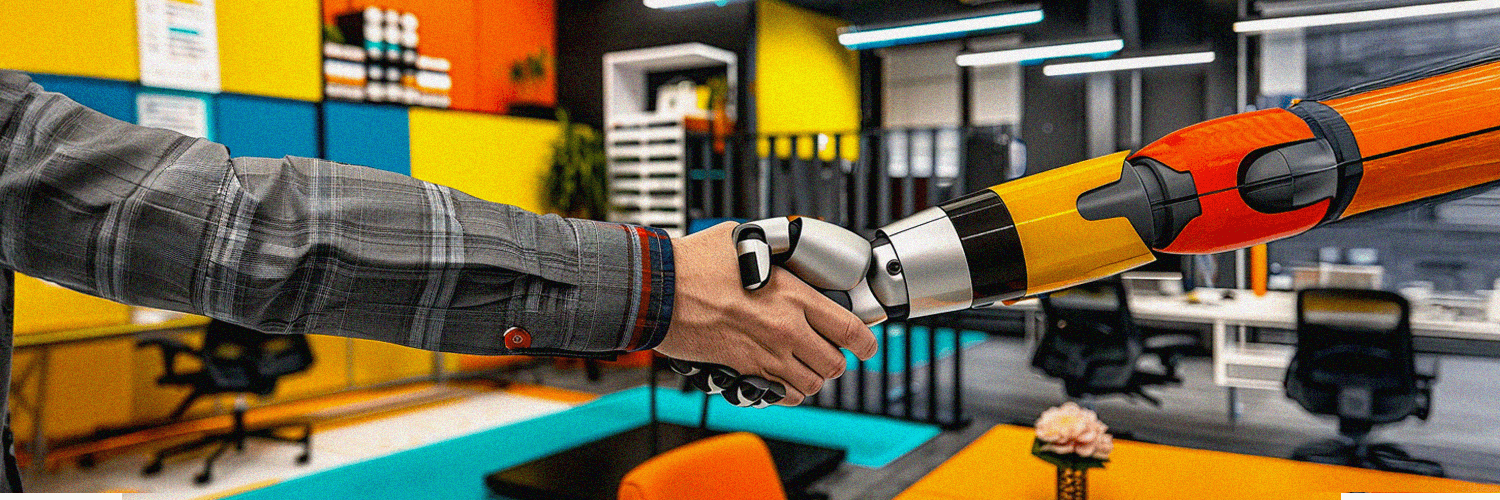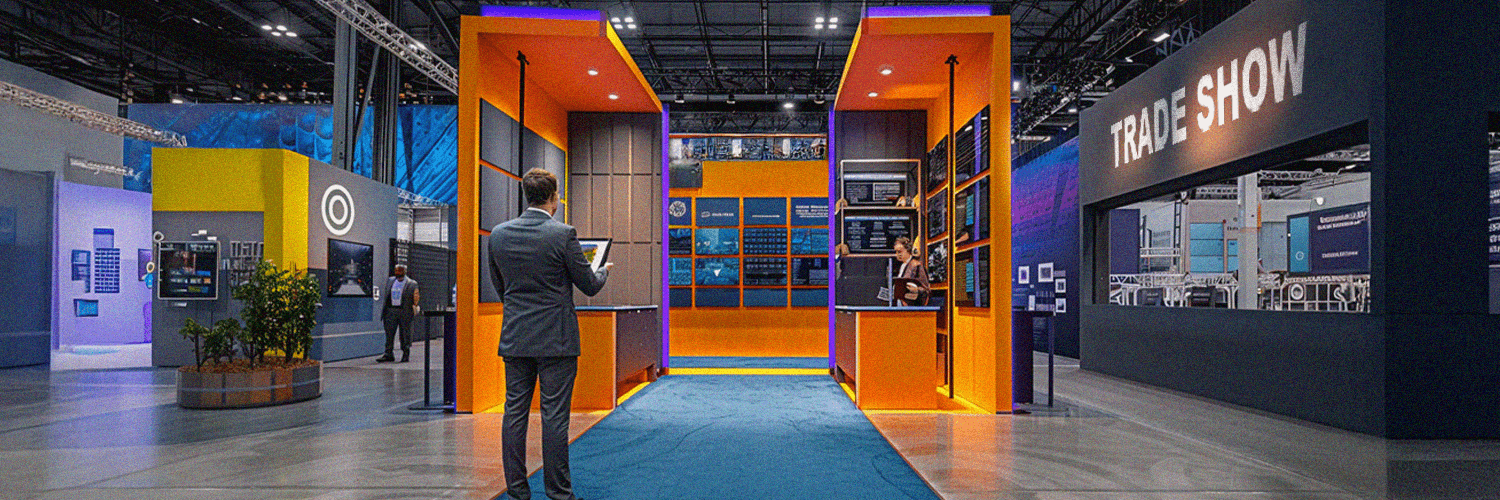The traditional office model is fading, making room for a new and dynamic replacement. Technological advancements, shifts in work preferences, and the evolving needs of modern businesses are causing disruptions to conventional work structures. Instead, flexible workspaces are emerging as a versatile model poised to revolutionize our perception of office space.
But what exactly does this concept entail, and why is it gaining traction globally?
In this article, we will thoroughly explore flexible workspaces—their appeal, their transformative impact, and the compelling reasons why you should consider embracing this trend. Get ready to question everything you thought you knew about the office!
TL;DR:
- Flexible workspaces allow individuals to configure their surroundings, promoting collaboration, creativity, and productivity with versatile furniture and technology.
- The rise of flexible workspaces started in the mid-2000s with coworking spaces, accelerated by digital innovations, remote work trends, and the 2020 pandemic shift.
- Differences between flexible workspaces and traditional offices include open-plan design, adaptability, and innovation versus formal, fixed environments.
- Benefits of flexible workspaces include increased productivity, improved employee wellness, networking opportunities, and cost-effectiveness.
- Various types of flexible workspaces cater to different organizational needs, including coworking spaces, hot desking offices, hybrid workspaces, and virtual offices.
- Companies of all sizes find benefits in flexible workspaces, offering cost-effectiveness, agility, and collaborative spaces.
- Future predictions for flexible workspaces include advanced technology integration, "work from anywhere" models, a focus on employee well-being, and inclusive spaces for diverse working styles.
What Is a Flexible Workspace?
Picture yourself in a traditionally structured office setup where every employee has a designated space or cubicle. Now, let's add some flexibility: replace uniform rows with dynamic open-plan layouts, swap fixed desktops for movable hot desks, and allow coworkers to pick any location as their workstation for the day.
In essence, that's your definition of a flexible workspace - it’s a dynamic and adaptable environment designed to accommodate diverse work styles and tasks. It allows individuals to easily configure and reconfigure their surroundings, promoting collaboration, creativity, and productivity. This type of workspace often incorporates versatile furniture, technology, and spatial arrangements to meet the evolving needs of its users.
Flexible workspaces surpass physical facilities; they embody a progressive shift towards employee well-being while effectively meeting company objectives. As businesses increasingly embrace flexibility, it plays a pivotal role in shaping the future of our collective work experience.
Brief Background on the Rise of Flexible Workspaces
In the early 2000s, those fond of traditional offices mainly saw flexible workspaces as a fad. "What could possibly replace our well-equipped and monumental office buildings?" was a typical skeptical viewpoint.
Flexible working spaces gained popularity in the mid-2000s with the rise of coworking spaces in urban areas, influenced by the innovative working styles of tech start-ups. These ventures, often constrained by finances or desiring a more relaxed work atmosphere, embraced the flexibility of working in diverse locations rather than traditional fixed offices.
Around the same time, digital innovation also began to fundamentally alter our understanding of what constituted a workspace. As sleek laptops replaced bulky desktop computers and high-speed internet became increasingly accessible, the foundations for a 'work from anywhere' culture started taking shape.
Heading into the second decade of this millennium, we saw substantial advancements, particularly in the predominance of smartphones and cloud technology, further facilitating flexible working methods. Data security concerns that once tied individuals to their office desks gradually evaporated with these technological leaps.
A major tipping point arrived in 2020 due to circumstances no one could have foreseen. The COVID-19 pandemic forced businesses worldwide into remote working models on an unprecedented scale. Offices across the globe turned desolate overnight, compelling companies to adopt flexible workspace models out of sheer necessity rather than as a deliberate preference when employees gradually returned.
Despite its humble beginnings, flexible working spaces have long ceased being merely trendy concepts; they've transformed into integral components shaping the future world of work. According to Stratview Research, the global flexible workspace market is expected to grow from $33.23 billion in 2020 to $73.04 billion by 2026.

What Are the Differences Between Flexible Workspaces and Traditional Offices?
There is an evident trend towards more adaptable ways to conduct business, and consequently, the line separating conventional office spaces and flexible working spaces is becoming more pronounced. What are the key differences?
Flexible workspaces and traditional offices differ significantly in their design, adaptability, and overall approach to the work environment. Flexible workspaces, characterized by open-plan layouts and adaptable workstations, prioritize dynamic and collaborative settings that easily adjust to changing needs. They often embrace diverse locations, including remote work options, and may lead to potential cost savings through shared resources. These spaces integrate cutting-edge technology and encourage employee collaboration, fostering innovation.
In contrast, traditional offices feature fixed cubicles, formal structures, and centralized locations, emphasizing a more conventional and hierarchical work environment. While they offer privacy through individual offices, they may be less responsive to change and technological advancements.
|
Aspect |
Flexible Workspaces |
Traditional Offices |
|
Layout |
Open-plan design, adaptable workstations |
Fixed cubicles, designated offices |
|
Flexibility |
Adaptable to changing needs and tasks |
Fixed and less responsive to changes |
|
Environment |
Dynamic, collaborative, and innovative |
Formal, structured, and conventional |
|
Location |
Diverse locations, including remote work |
Centralized offices with fixed location |
|
Costs |
Potential cost savings, shared resources |
Higher fixed costs for maintenance |
|
Technology Integration |
Embraces cutting-edge tech, remote tools |
May have a slower adoption of technology |
|
Employee Collaboration |
Fosters collaboration and creativity |
Traditional hierarchy, less interaction |
|
Privacy |
Incorporates quiet zones or private booths |
Emphasis on individual office spaces |
|
Work-Life Balance |
Supports work-life balance, remote work |
May have a more rigid work schedule |
|
Response to Change |
Agile and responsive to evolving needs |
More resistant to change |
Benefits of Flexible Workspaces
Flexible workspaces bring numerous benefits that deserve attention as they reshape traditional office norms. It's worthwhile to explore them in more detail.
Boost in Productivity
Flexible workspaces enhance productivity by allowing individuals to choose where and how they work, fostering a sense of control and comfort. The adaptable nature of these spaces will enable employees to tailor their environment to suit their tasks, leading to increased focus and efficiency. Additionally, the collaborative and dynamic atmosphere in flexible workspaces promotes creativity and innovation, further contributing to heightened overall efficiency.
Improved Employee Wellness
Flexible workspaces contribute to employee wellness by accommodating diverse work styles and preferences. This adaptability supports a healthier work-life balance, reducing stress and burnout. Furthermore, incorporating office amenities such as ergonomic furniture, natural light, and collaborative spaces enhances physical and mental well-being. The flexibility to choose where and how to work promotes a sense of autonomy and reduces the negative impact of a rigid, one-size-fits-all approach to the workplace, ultimately fostering a more supportive and holistic work environment.
Networking Opportunities
In contrast with isolated compartments in traditional offices, open floor plans commonly seen within flexible workspaces encourage interaction among diverse groups of professionals across different industries. Not only does this augment collaboration, but it also sparks innovative ideas when multiple backgrounds come together.
Cost-Effectiveness
Flexible workspaces drive cost effectiveness through various means. By embracing remote work and flexible work policies, companies can reduce expenses associated with maintaining a traditional office space, such as lease costs, utilities, and maintenance. Additionally, utilizing shared workspaces or hot desking models optimizes space usage, minimizing the need for excess square footage. This not only lowers real estate expenses but also promotes resource efficiency.
An IT company ASEE provides a compelling illustration of the cost-effectiveness of flexible workspaces. After streamlining their office space by reducing it by one floor, they adopted flexible working practices facilitated by YAROOMS for daily space booking. Adrian Nastase, Country Leader at ASEE Romania, highlights the financial impact: "By doing this, we can save approximately €200k a year—an amount that would otherwise be allocated to rent and maintenance for the extra floor."
While we've discussed some significant benefits, they can vary based on the organization's needs and situations. Therefore, companies considering moving to a flexible workspace should consider their unique requirements to understand the full scope of advantages.
Key Features and Elements of Flexible Workspaces
Flexible workspaces stand out because of their unique features — elements that offer an optimal blend of comfort, utility, collaboration, and convenience. Understanding what makes flexible spaces tick gives a deeper insight into why they lead the future of work environments.
Open-Plan Designs
Flexible offices often feature an open-plan design, emphasizing a layout with minimal partitions and walls to create a free-flowing environment. This architectural approach aims to optimize space usage while encouraging seamless employee communication and interaction.
The benefits of open-plan offices include enhanced team collaboration and cross-functional understanding, facilitated by consistent visual contact and interaction. An open setting fosters creativity by making it easier for ideas to be exchanged freely. Significantly, the design doesn't compromise individual privacy, thanks to the clever integration of quiet zones or private booths within the setup.
Focus Zones
Recognizing the diverse nature of tasks in modern jobs, flexible office layouts incorporate focus zones. These are dedicated spaces crafted for specific tasks that demand deep concentration, minimizing background noise common in open-space settings. These focus areas can quickly transform into private study rooms or small meeting halls as needed, swiftly adapting to assist employees during intense work. This thoughtful feature ensures everyone can discover a productive space tailored to their working style or specific task requirements.
Adaptable Workstations
Adaptable workstations are a pivotal feature in flexible workspaces, embodying a dynamic approach to the modern work environment. These workstations are designed to be versatile and easily customizable, allowing individuals to adjust their workspace according to specific tasks or preferences.
Whether it's modifying desk configurations, integrating movable furniture, or incorporating adjustable technology, adaptable workstations help to create an environment that enhances productivity and comfort. This flexibility accommodates diverse work styles and reflects the ever-changing nature of contemporary work, fostering an agile and responsive atmosphere within the workspace.
Shared Facilities
Flexible workspaces often provide shared facilities, including communal kitchen and dining areas for informal interactions, as well as tech infrastructure like conference rooms with modern communication tools for virtual meetings or webinars. Beyond cost savings through shared resources, these spaces aim to foster community and collaboration, breaking down hierarchical barriers to build stronger professional bonds. This approach strengthens team spirit by bringing together diverse minds in shared physical spaces, all working toward unique goals centered on success, growth, and development.
Different Types of Flexible Workspaces
To grasp the diverse world of flexible workspaces, let's explore various setups falling under this umbrella.
Coworking Spaces
Coworking spaces are dynamic and collaborative work environments that unite individuals from various professions, industries, and companies. These flexible workspaces foster community, creativity, and networking among professionals who may not necessarily work for the same organization. Typically, a coworking space provides an open layout with shared desks, private offices, meeting rooms, and communal areas.
Hot Desking Offices
Hot desking offices represent a flexible and dynamic approach to office space utilization where employees do not have assigned desks or workstations. Instead, individuals choose an available desk or workspace upon arrival, promoting a more agile and collaborative work environment. This concept is prevalent in settings where employees do not need a fixed desk daily, encouraging mobility and maximizing space efficiency.
Hybrid Workspaces
Hybrid offices combine elements of remote work and traditional in-person office setups. This model recognizes that employees may split their time between working remotely and attending a physical office. It aims to balance the benefits of face-to-face collaboration and the flexibility of remote work, catering to the diverse needs and preferences of modern workforce dynamics.
Virtual Offices
Virtual offices represent a flexible workspace that leverages technology to enable remote work without needing a physical location. These offices are characterized by their reliance on digital tools and collaboration technologies, allowing employees to collaborate and perform their tasks from different locations.
Private Modular Offices
For businesses seeking a blend of privacy and flexibility, private modular offices offer a compelling solution. These are customizable office suites within a larger flexible workspace building. They provide dedicated, enclosed spaces with the option to adjust the size and layout as business needs change.
Key Characteristics of Flexible Workspaces
Let's break down the concept of flexible workspaces by highlighting some primary characteristics that make these spaces stand out.
Customizability
Flexible workspaces stand out for their ability to be customized. Unlike traditional offices with fixed setups, flexible office spaces provide modular layouts that can be easily adjusted to suit your team's needs and preferences. This allows you to rearrange workstations based on project requirements and personalize communal areas to promote a positive culture and teamwork within your organization.
Cost-Efficiency
One cannot discuss flexible workspaces without mentioning cost efficiency. Forget about long-term lease agreements or hefty overhead payments; with flexible workspaces, you only pay for what you use. You control how much space you need (and subsequently pay for), making it a practical option for startups and large corporations. Tools like Lease Accounting Software can further help businesses track, manage, and optimize these costs effectively.
Technology-Readiness
Given our dependency on technology today, having an office space designed to accommodate complex digital setups is imperative. Most flexible workspaces feature state-of-the-art IT infrastructure with robust internet connections and tech support readily available. As such, anyone moving into a flexible office can be assured that they'll have access to the necessary technological resources from day one.
Shared Resources and Amenities
Flexible workspaces are well-equipped with shared resources, including meeting rooms, communal areas, kitchens, and office equipment, promoting collaboration and convenience. High-speed internet, on-site IT support, and security measures ensure a seamless and secure working environment. With flexible seating options, these spaces cater to diverse preferences, making them convenient and collaborative for professionals and businesses.
What Size of Company Is a Good Match for Flexible Office Spaces?
Flexible workspaces, also called flex office spaces, are increasingly popular for companies of all sizes. However, startups are predicted to constitute the primary customer segment for the flexible workspace market, with medium-sized enterprises and corporations to follow:
- For startups and small businesses, flex offices offer cost-effectiveness and agility. They allow these organizations a physical presence without heavy investments in long-term leases or additional expenses like reception staffing and maintenance. Flex offices provide immediate access to well-equipped spaces with fixed utilities, allowing quick adjustments to floor area based on business growth.
- Mid-sized companies can use flex offices during relocation or expansion phases. Businesses dealing with unpredictable market trends appreciate the ability to scale up or down without unnecessary penalties.
- Even large corporations benefit from flexible workspaces. They can use these solutions to create additional collaborative spaces outside their headquarters, test new markets before establishing permanent branches, and promote innovation among employees with a change of scenery.

Who Can Benefit from Flexible Workspaces?
The beauty of flexible workspaces lies in their versatility. They cater to individuals and businesses, each with unique needs and working styles. So, who stands to gain the most from embracing this modern work setup? Let's delve into the different groups that can thrive in a flexible office environment.
- Freelancers and Independent Contractors: Flexible office spaces are a godsend for freelancers and independent contractors who crave a professional setting outside the confines of their homes. Co-working spaces, in particular, offer a vibrant community and networking opportunities, combating the isolation that often comes with solo work.
- Startups and Small Businesses: Startups and small businesses benefit significantly from flexible office spaces due to their cost-effectiveness. Instead of locking themselves into long-term leases and hefty overhead costs, they can opt for flexible arrangements, scaling their workspace up or down as their business evolves.
- Remote Teams and Global Companies: For companies with a geographically dispersed workforce, flexible office spaces provide a physical touchpoint for employees to collaborate and connect in person. This fosters team cohesion and strengthens company culture even when team members are scattered globally.
- Enterprises Embracing Hybrid Work Models: As hybrid work models gain traction, large corporations increasingly integrate flexible workspaces into their real estate strategy. This allows them to provide employees with greater autonomy and choice in their work environment while optimizing their office footprint.
- Traveling Professionals and Digital Nomads: Traveling professionals and digital nomads who value flexibility and mobility find solace in flexible office spaces. They offer a reliable and professional environment to work in regardless of location, ensuring productivity stays high even on the move.
The flexible office space sector is on a trajectory of significant growth, predicted to increase from its current size of 53.4 million square feet (MSF) to 81 million MSF by 2025, demonstrating a 52% increase. This substantial expansion underscores the escalating demand for flexible office solutions across various professional demographics.
Implementing Flexible Workspaces
Let's explore the strategic considerations and practical steps of adopting flexible workspaces.
Assessing Company Needs And Goals
To start the shift to flexible workspaces, evaluate what your organization aims to achieve by adjusting its work environment. This involves identifying what's working well and areas that need improvement in your corporate setup. Understanding these dynamics is crucial for designing structures that seamlessly align with company objectives.
Identifying Potential Challenges And Solutions
Change, even when it aims to optimize ways of conducting business, may present hurdles along the way. You might face resistance from staff used to operating under specific conditions or dealing with external factors such as zoning regulations affecting remodeling undertakings.
Being proactive helps create plans to reduce challenges. For example, giving your employees a role in the process makes them feel involved in the transition.
Creating a Transition Plan
Having comprehended the above aspects, you must draw up an implementation blueprint. This plan should denote timelines for executing various tasks and identify who is critical to facilitating the smooth coordination of functions during this phase.
It’s also essential to onboard staff with forthcoming office space adjustments and settle into new routines within your flexible workspace once modifications are complete.
Communication And Employee Engagement
Switching from familiar routines to new territories can make team members anxious. Clear, consistent communication helps ease fears during changes. Involving staff in decisions about their workspaces, based on their roles, enhances engagement, satisfaction, and overall productivity in flexible arrangements.
Adapting Office Layout And Design
When it comes to recalibrating office structure and design under a flexible framework policy, variety is vital. Provisions should include areas for individual-focused activities alongside communal hubs fostering collaborative interactions — each effectively capitalizing on employee strengths corresponding to specific task demands.
Adaptable furniture promotes mobility, while lighting controls accompanying factors adeptly influence mood and concentration capabilities, subtly guiding towards desired results effortlessly.
Utilizing Technology and Software
Utilizing technology and software is crucial in implementing flexible workspaces, as it enhances efficiency, communication, and adaptability. And solutions like YAROOMS play a key role in streamlining this process.
YAROOMS Workplace Experience Platform enables organizations to seamlessly manage every aspect of workplace experience. Its user-friendly interface allows employees to easily book meeting rooms, desks, or other facilities, promoting a more flexible and collaborative working environment. Additionally, Yarooms provides extensive workplace data and analytics, empowering businesses to make informed decisions about space usage and continually improve their flexible workspace strategies.
Predictions for the Future of Flexible Workspaces
Several trends and predictions emerge as we look ahead to the future of flexible workspaces.
The continued integration of advanced technologies, such as augmented reality and artificial intelligence, is expected to enhance remote collaboration and make virtual workspaces more immersive.
The concept of "work from anywhere" is likely to become more prevalent, with organizations adopting hybrid models that offer employees flexibility in choosing their work locations.
Additionally, the focus on employee well-being and creating dynamic, experience-driven work environments will drive the design and amenities of flexible workspaces. As the global workforce becomes increasingly diverse, the demand for inclusive and adaptable spaces that cater to various working styles and preferences will grow.
Overall, the future of flexible workspaces appears to be shaped by a harmonious blend of technological innovation, employee-centric design, and the evolving nature of work itself.
Final Thoughts on Flexible Workspaces
The evolution from traditional office models to dynamic and flexible workspaces reflects a profound shift in how we perceive and engage with our work environments. Driven by technological advancements, changing work preferences, and the evolving needs of modern businesses, flexible workspaces have emerged as versatile models poised to redefine our notions of office space.
This article has explored the core concepts of flexible workspaces, their historical rise, key differences from traditional offices, benefits, and the essential features that make them stand out as we anticipate the future; the trajectory of flexible workspaces points towards a fusion of advanced technologies, a "work from anywhere" culture, and an unwavering commitment to employee well-being.
The growth of the global flexible workspace market underscores the significant role these adaptable environments play in shaping the future of work. Whether through coworking spaces, hot desking offices, or virtual offices, the momentum towards flexible workspaces continues to gather, contributing to a transformative and inclusive work experience for organizations of all sizes.
Common Questions on Flexible Workspace
This section addresses some common questions about flexible workspaces. We'll explore the nuances of different workspace types and gain a deeper understanding of the flexible workspace industry.
What Is the Difference between a Flex Space and a Co-working Space?
While "flex space" and "co-working space" are often used interchangeably, there's a subtle distinction. A flex space refers to any workspace offering flexible lease terms, layouts, and amenities. Coworking spaces are a type of flex space designed for collaboration and community interaction. They typically feature shared desks, communal areas, and a focus on networking. Essentially, all co-working spaces are flex spaces, but not all flex spaces are co-working spaces.
What Is the Difference between Flexible Office and Fixed Office?
The difference between a flexible office and a fixed office boils down to flexibility! A fixed office usually involves a long-term lease agreement for a dedicated private office space. It offers stability but limited room for adjustments. On the other hand, a flexible office (or what is flex office space) offers short-term leases, adaptable layouts, and the freedom to scale up or down as your needs change. This adaptability makes flexible office spaces ideal for startups, freelancers, and businesses navigating growth phases.
What Is the Flexible Workspace Industry?
The flexible workspace industry, a rapidly growing sector, is meeting the evolving needs of modern businesses and workers. Last year, the demand for flexible workspace in global cities increased by an impressive 19%, outpacing the average increase in supply at 16%. This strong demand is a clear indicator of the industry's potential. Major global hubs like London, New York City, San Francisco, and Singapore have also witnessed significant growth in this sector. The global flexible office market size, valued at USD 30.72 billion in 2022, is projected to exhibit a CAGR of 15.76% over the forecast period, reaching USD 96.77 billion by 2030.
The flexible workspace industry includes a diverse range of providers, from large multinational companies to smaller independent operators. As the demand for workspace flexibility continues to rise, this industry is poised for continued innovation and expansion in the years to come.













